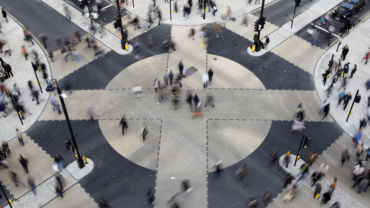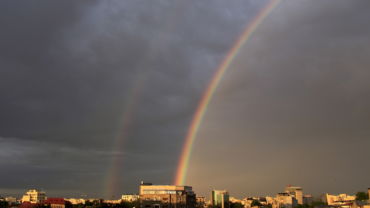REUTERS/Yuya Shino
In the summer of 2020, the death of George Floyd, in the United States, at the hands of law enforcement inspired worldwide protests and activism in support of Black Lives Matter. The movement over the summer opened the wound of the ongoing unresolved issue around institutional racism in policing in the United Kingdom (UK), which most recently played itself out in the 2011 death of Mark Duggan, who was shot by police officers without any penalty of criminality by the Independent Police Complaints Commission.
Rachel McKoy, Head of Commercial and Contracts at the London Borough of Tower Hamlets, participated in a webinar hosted by Lawyers in Local Government (LLG) and Thomson Reuters on the racial injustice in how public sector lawyers could increase their advocacy for removing bias and injustice within institutions that interface with local communities. McKoy’s participation is an example of the reason why she has committed herself to working as a public sector lawyer for her entire career. “What is quite special about my area of practice [as a public sector lawyer] is that I get to play a part in transforming communities and making a difference,” she says. McKoy’s experience has ranged from local to central government, supporting and opposing, big infrastructure and regeneration projects based on their impact upon marginalized communities.
For McKoy, the recent movement for racial justice was a clarion call as a massive opportunity to gather the voices from every generation, socio-economic background, race/ethnicity to build a multidimensional movement around dismantling institutional racism across key policy areas including: equity in education, employment, health, housing, and justice systems. The pervasiveness of the systemic racism is invisible, making it easier for a lot of people to avoid the reality that is so obvious among those in disadvantaged communities. For McKoy, now this is the time where she and her peers in the public sector, and society at large, really need to have a look at how things have changed since the MacPherson report was published in 1999, and for many, the overriding observation is “not much has changed actually”.
How systemic racism shows up across policy areas
Systemic racism in one policy area produces inadequate outcomes in another. To demonstrate the linkage, McKoy states, “It starts with socioeconomics and the type of community in which one is living”. Unfortunately, young people living in public housing and areas of poverty are more likely to be from Black and Minority Ethnic (BAME) backgrounds, which means that their schools are poorly funded and improperly resourced. Exacerbating the situation, these students are more likely to be labeled as socially troubled and experience more disciplinary penalties when “what is really going on is that these students are acting out and displaying the frustrations with their environment”, McKoy elaborates. Because of the behavioural issues, the students are relegated to pupil referral units, which, according to McKoy, increase the chances of entering gang life and exposure to the influence and incidents of petty crime. These multiple interactions with the criminal justice systems lead to harassment from the police through their, often disproportionate, exercise of stop-and-search practices—in addition to police brutality and racism. From there, the cycle repeats itself over and over from one generation to another. Social issues easily become criminalised by default and lack of understanding or willingness to acknowledge the root cause of such behaviour.
The statistics back up McKoy’s illustration. There is a high preponderance of exclusions, especially for black boys from a Caribbean background:
- For black, Caribbean boys, who are eligible for free school meals, which is kind of the measure of social deprivation, they are 168 times more likely to be permanently excluded than a white British girl with no special educational needs who isn’t on free school meals.
- Only 2.2 percent of the most deprived children achieve the A-levels needed to transform their lives out of poverty. Comparatively, 2600 of the private schools in the UK educate 7 percent of the population or 625,000 people. Of those, 74 percent of the 7 percent become high court judges; 71 percent senior military, 51 percent of solicitors; 61 percent of senior doctors; and, 27 percent Ministers of Parliament.
On the need for greater investment in BAME inclusion by legal employers
McKoy advocates for more investment in time and attention to BAME lawyers and those solicitors with more than one diverse identity among legal employers. In her view, the focus always seems to be on disability, the LGBT community and women. McKoy describes her dual identity status as a BAME woman lawyer as a double edge sword, and because of this, “there is a need to not disaggregate them” and be much “more broadly focused on people’s experiences…with increased communication, networking…and having open conversations among staff networks with senior leaders who should demonstrate their leadership in spearheading diverse talent and recognizing there is a real issue here to champion”.
With many biases in recruitment, performance, retention, and promotion, McKoy favours increased investments in social mobility programs and more partnerships at the grassroots level among socially disadvantaged communities. Such programmes need to start raising aspiration when students are much younger, 10 years of age, and when still in the primary education system. They should be introduced to inspiring speakers, tools to increase confidence, public speaking, life skills, and emotional intelligence. Additionally, they should be provided with exposure to information about the plethora of careers and opportunities that exist. The need to build social capital needs to start early because, according to McKoy, “students from disadvantaged backgrounds, BAME backgrounds, are not going to have the capital of their parents and family members and networks to get valuable work placement”.
In addition, all individuals, whether or not they are from a BAME background or not, need to speak up within their own organization to enhance BAME networks of lawyers and for white lawyers, to support the voices of BAME colleagues up the chain to Corporate Directors and CEOs. Importantly though, the force of that message needs to be cascaded from the top-down also to prove a commitment of intent to actual change.
In response to the BAME colleagues who are afraid to discuss race and their experience, thinking it is ‘trouble-making’, McKoy doubles down on the need to discuss these issues, especially now given the current legacy of the British Empire debate and importantly since the UK has left the European Union, which continues to stirrup the debate on immigration and the debate on identity. Essentially, there is a focus upon what it means to be British, British values and what does a Briton look like. Unfortunately, often with racist undertones “When people don’t talk about things, that’s when the negative ideas fester”, McKoy states. Therefore, it is imperative that communication and expression of all views are encouraged and afforded adequate space.



